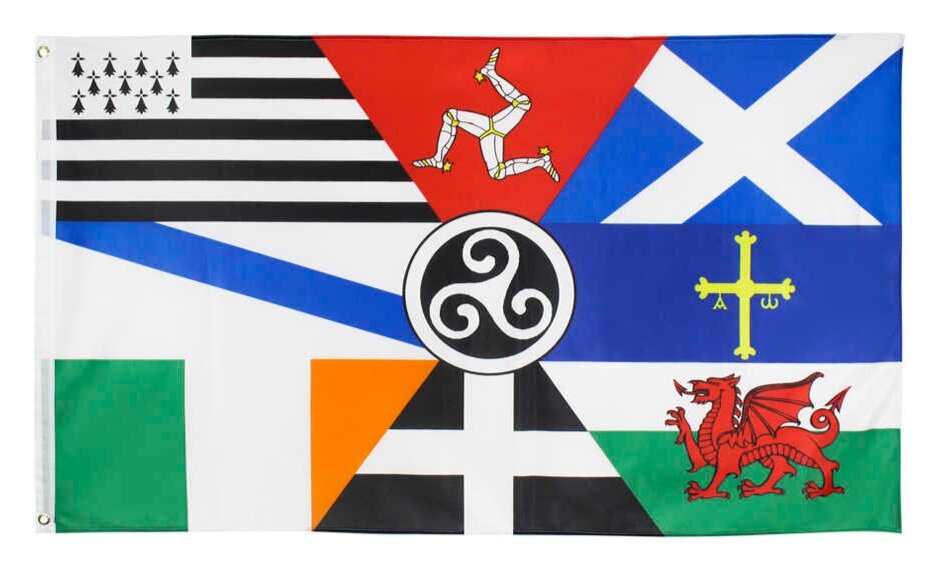Celtic Flags
Parades and flags are part of summer. I thought it might be fun to visit the flags of the Celtic nations. Some are well-known; others may surprise you.
Here is a collage of Celtic flags. Note the triskele at the center that unites them. Then, see which ones you can identify.
Let’s begin with the low hanging fruit, i.e., the most well- known.
The tricolor flag of the Republic of Ireland ties the Orange and Green together with a peaceable white center.
The blue and white flag of Scotland depicts St. Andrew’s cross (or saltire) across the field of blue.
The flag of Wales sports a red dragon on a field of green and white.
Cornwall is represented by a black flag with the white cross of St. Piran.
The black and white flag of Brittany has ermine spots. The stripes represent the present diversity of this region in northwest France while the spots represent its ancient emblem.
And the 3- Legged wheel on a field of red is the flag of the Isle of Man.
Since the Isle of Man flag is the most unique and probably least known, let’s elaborate on its origins and meaning. The following is taken from Isle Man online:
The famous Three Legs of Mann appear to have been adopted in the Thirteenth Century as the royal coat of arms for three kings of the Isle of Man whose realm at the time also included the Hebrides in the Western Isles of Scotland.
The emblem was retained when control of the Island passed permanently to the English Crown. One of the earliest remaining depictions of the emblem is on the Manx Sword of State thought to have been made in 1300A.D. The Three Legs of Mann symbol also appeared on Manx coins from the 17th Century.
It is not known for sure why the emblem was adopted by the 13th Century kings but it may just have been that it was striking and distinctive.
The history of the Three Legs of Mann goes as far back as Pagan times and was originally a symbol of the sun and of power and life.
It has also been suggested that the Manx Three legs symbol may have been an adaptation of the “triskele” which appeared on coins of the 10th Century Norse King Analaf Cuaran whose dominion included Dublin and the Isle of Man.
And, if you are wondering, all the early examples of the Manx “Legs” show them running clockwise towards the sun.

